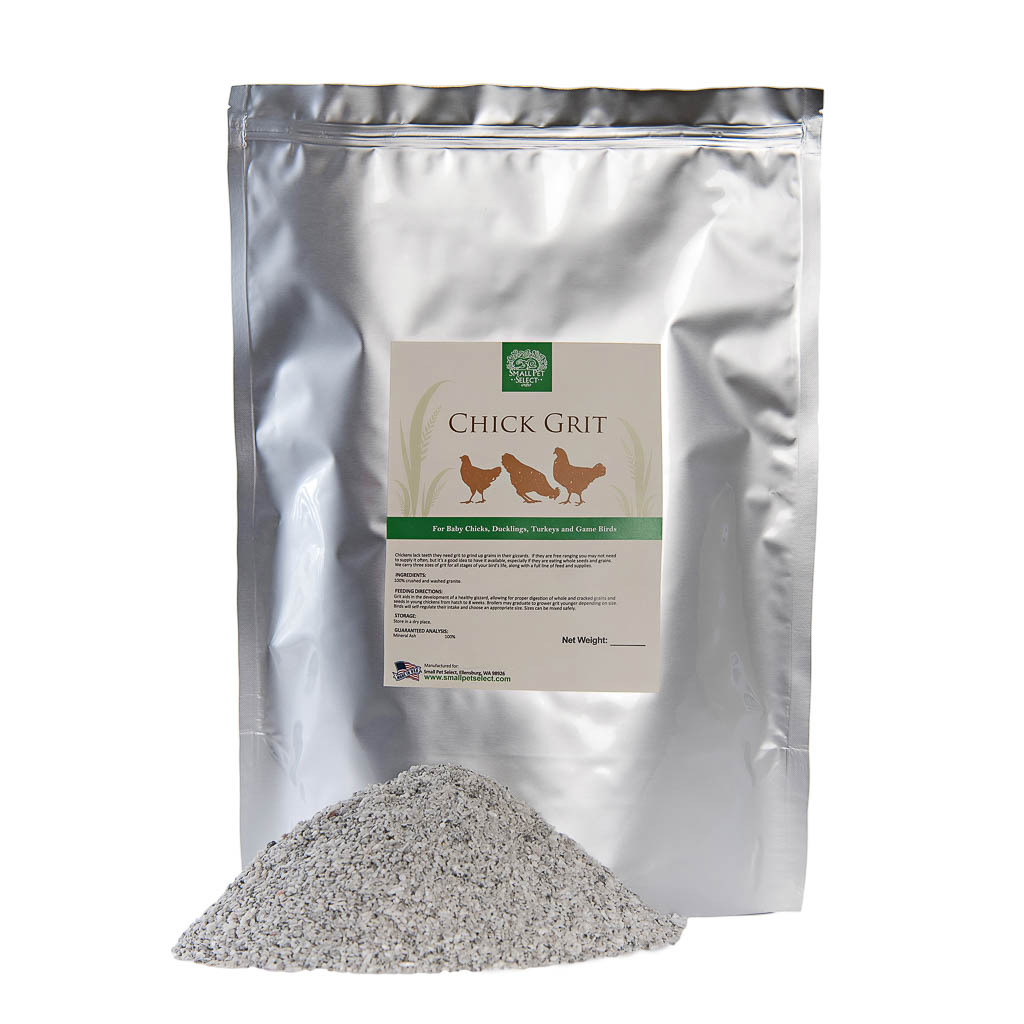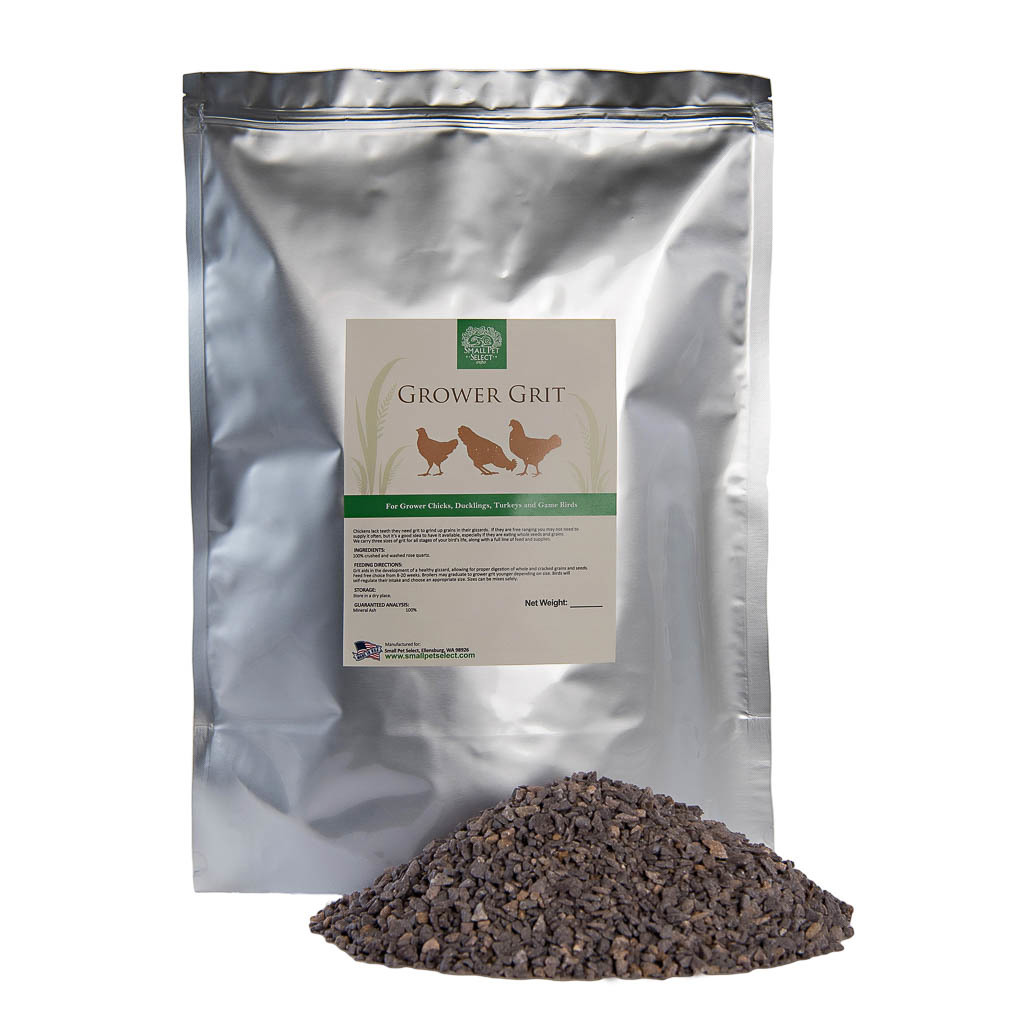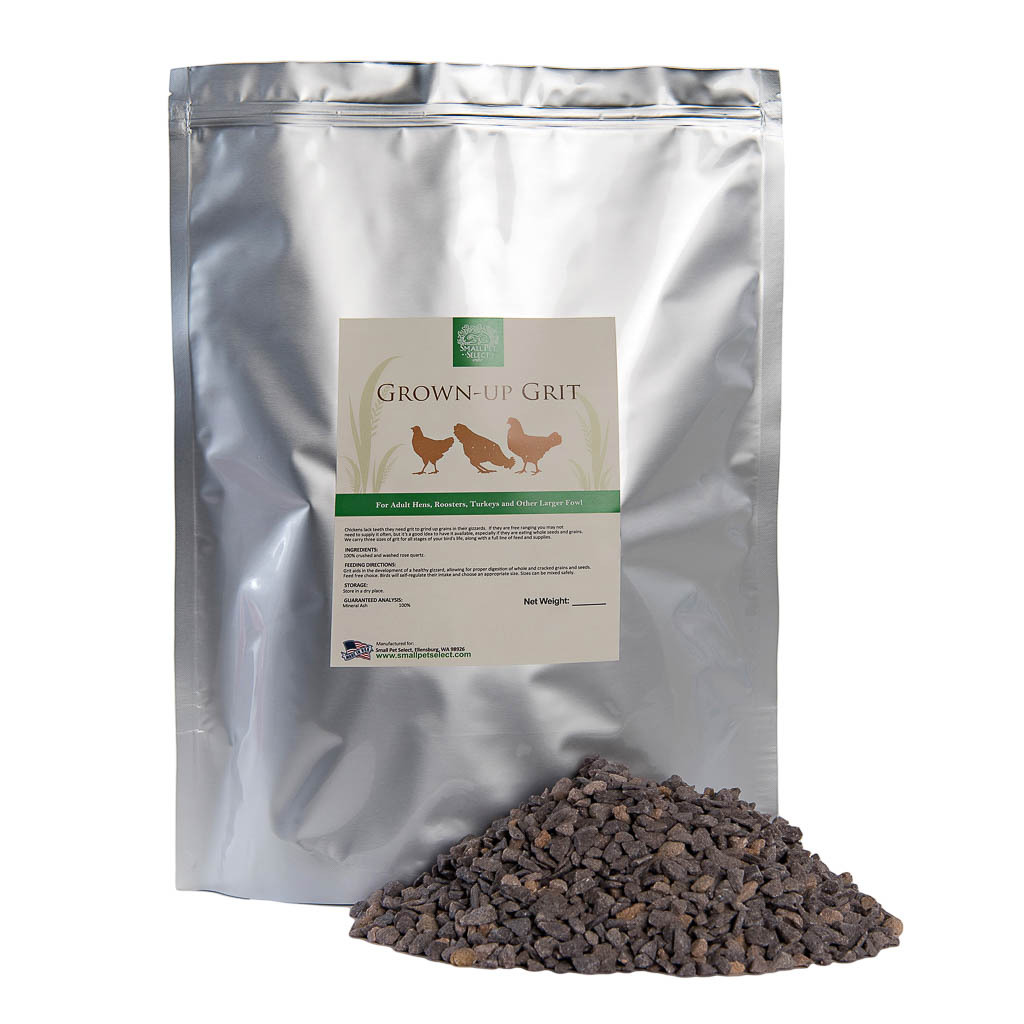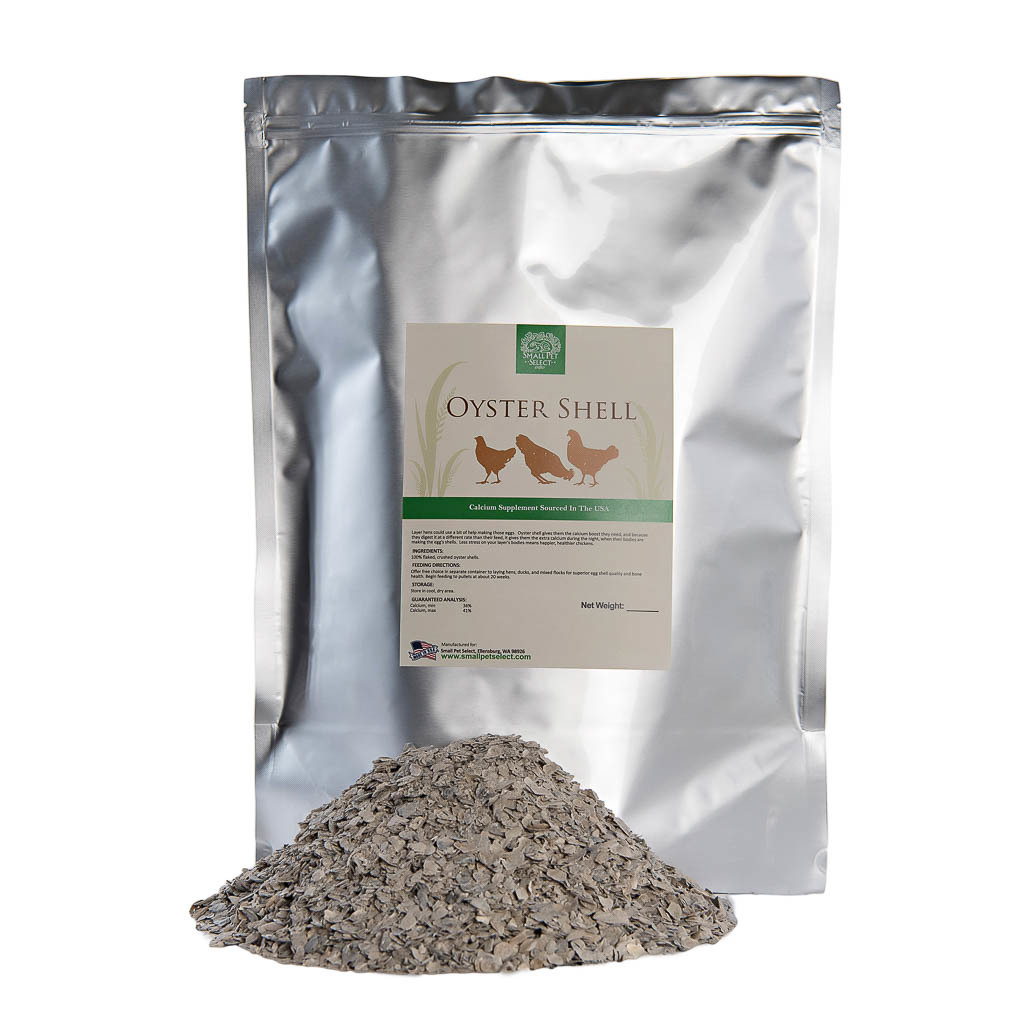All animals need a comfy and safe habitat… including chickens. However, if you do an internet search for “chicken coop necessities,” the results are overwhelming. To keep it simple, we’re going to give you the low down on the bare necessities to keep your flock safe, healthy, and happy.
Size Matters
Before choosing or building your coop, it’s essential to determine the size based upon how many backyard chickens are in your flock. While these size recommendations are for the average chicken, it’s important not to underestimate size. You may have other considerations (chicken breeds, behavior characteristics, such as bullying, and flock expansion potential).
Poultry require an average of four to five square feet each. However, if you’re going to let them forage outside, two to three square feet is sufficient for the indoor portion. Conversely, if your flock stays inside most of the time, five to ten square feet per chicken is best.
The Scoop on the Backyard Coop
The choices to buy a new coop or repurpose other shelter items are endless. Of course, you'll need to check with your municipality and homeowner’s association (HOA) for building codes and zoning ordinances for your urban chicken. As an example, our very own Small Pet Select teammate, Shelby, has a custom coop crafted by her husband that matches their home... complete with all chicken coop necessities. (Pretty cool, huh?)
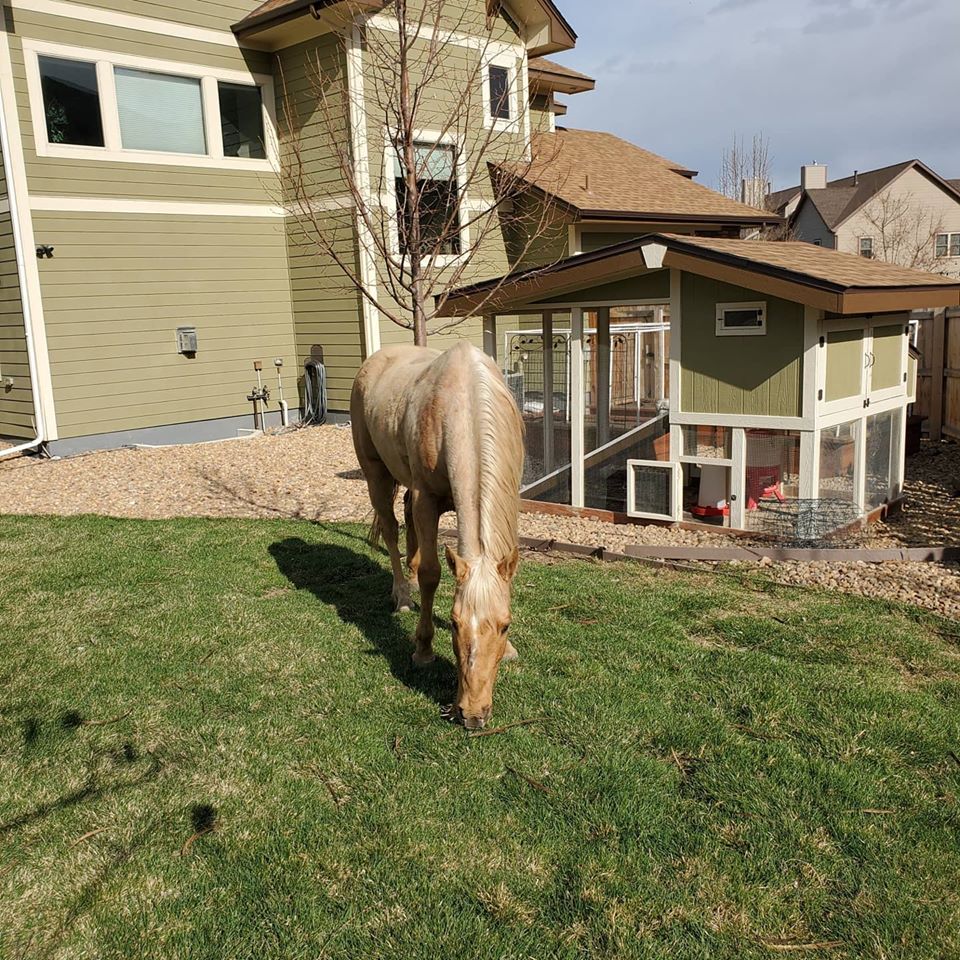
📷: Shelby Stone
Whatever materials you choose for your laying hens, there are four required features: Structure, Nesting Boxes and Roosts, Food and Water Stations, and Storage.
Structure
- Roof and Four Walls: When considering chicken coop plans, having four walls is a given. Additionally, the roof must be air and watertight. For this reason, many chicken parents have coop roofs made of sheet metal, shingles, or PVC. Also, depending on your climate, you should consider insulating the walls and ceiling.
- Floor: Having a bare earth or concrete floor is preferred. Wood can rot from moisture as well as chicken 💩 and pee.
- Predator Protection: Chickens are prey animals, so one of the most critical necessities for coops ensures protection from non-flock members. Poultry predators include dogs, cats, coyotes, wolves, weasels, and foxes.
- Ventilation: While your coop won't have an HVAC system, guaranteeing proper ventilation is frequently overlooked during construction. Chicken feed is already dusty. Combine this with feathers, manure, and bedding, and you have a lot of stuff floating in the air. The easiest way to create airflow is to have ventilation holes or windows. Be careful to secure any ventilation openings to prevent predatory animals.
- Heat and Light: Who doesn’t want creature comforts in their house? Chickens love them just as much as anyone. If you have laying hens, they need 16 hours of daylight. In some parts of the globe during certain seasons, Mother Nature can’t provide that. You can substitute sunlight through south-facing windows or electric heat lamps. However, be very cautious about the types of heat lamps you choose, as they can cause fires.
- Runs with Fencing: Fresh air and a place to run will keep your flock healthy and happy. Each chicken requires 10 sq ft of space in the run. No pun intended, but you’ll need chicken wire to build the run, along with fence posts. The chicken wire must be buried at least one foot in the ground to provide predator protection. To keep your poultry comfortable, cover the top with a mesh roof. This also prevents wild birds from getting in.
- Shade: Instead of tanning, chickens love the shade. Create shady spots in your coop and run or put them in areas with natural shade.
- Dust baths. If your flock is free-range or has a run, they will find places to take a dust bath. If they're inside most of the time, create a dust bath using a box filled with sand or dirt. Dust baths keep your peepers clean and taking them controls parasites.
Nesting Boxes and Roosts
- Nest boxes: Again, the amount of nest boxes you have depends on the size of your flock. Four to five hens need one nest box or one square foot of communal nesting space two feet off the ground.
- Roosts: Roosting and perching is an essential daily activity. Like the nest boxes, roosts need to be two feet off the ground. Additionally, you need 6-10 inches of space per chicken.
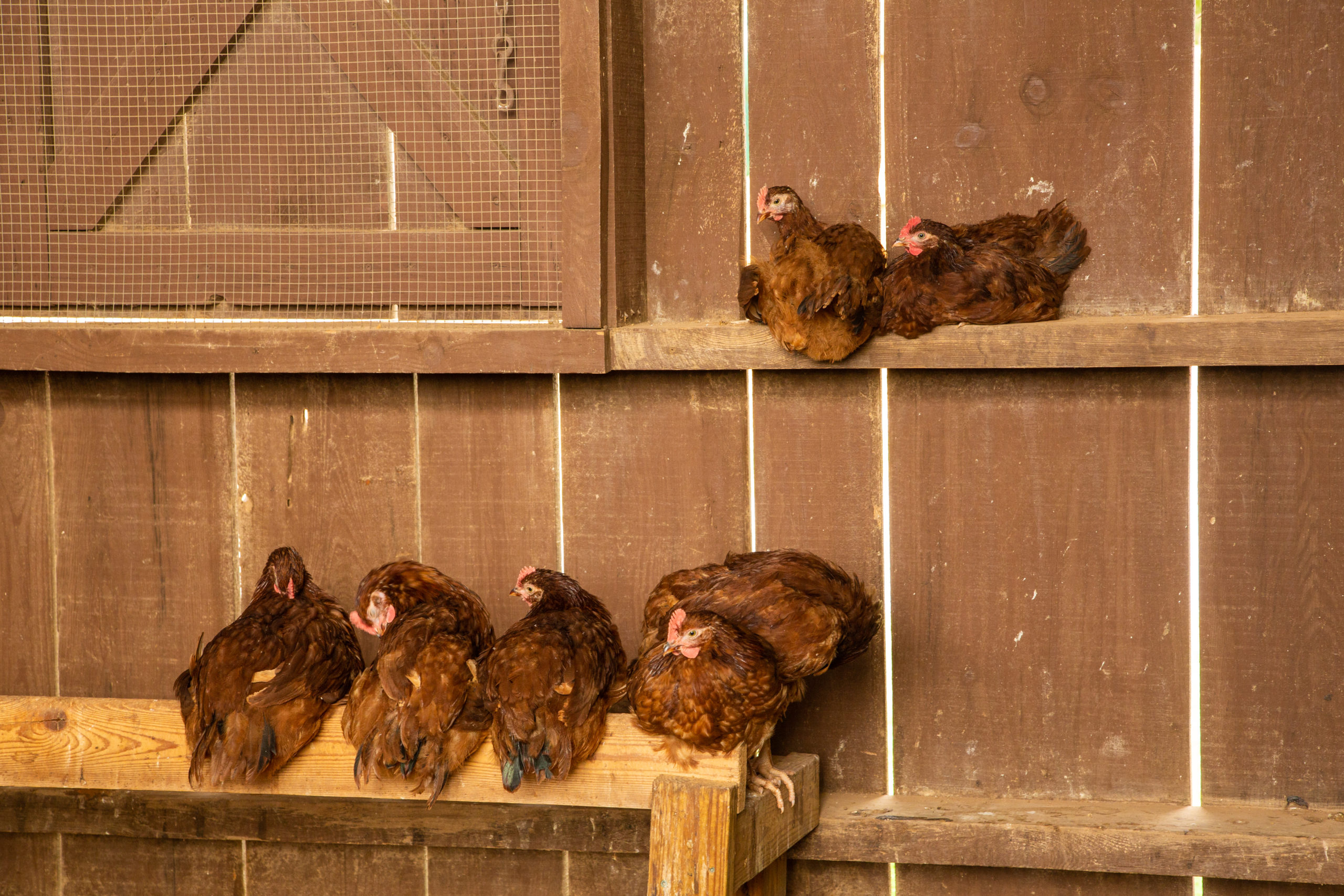
Food and Water Stations
- Hanging Feeder: Chickens don't need matching china to enjoy their meals. However, they eat all day, and you might have to hire a food delivery service to keep refilling their bowls. Many chicken parents have large-capacity hanging feeders, similar to our hay mangers. This also keeps rodents out of their food and decreases mess.
- Waterer: Similar to feeders, unlimited water is essential. You’ll want a large capacity waterer to keep your flock hydrated. If you have electricity running to your coop, you can also heat the water in colder months to prevent freezing.
- Supplement Dispenser: While your chickens don’t go to the gym, grit and oyster shell supplements round out a complete poultry diet. Chickens don't have teeth, so eating grit ensures their food digests properly. Additionally, the oyster shell provides needed calcium for laying hens.
- Free-range versus coop-bound chicken food needs: The beauty of a free-range flock is they won't overeat their feed in the coop. Having extensive outside access allows a variety of deliciousness, including bugs, grasses, seeds, and leaves. If your chickens are confined, plan on 1.5 pounds of feed each per week.
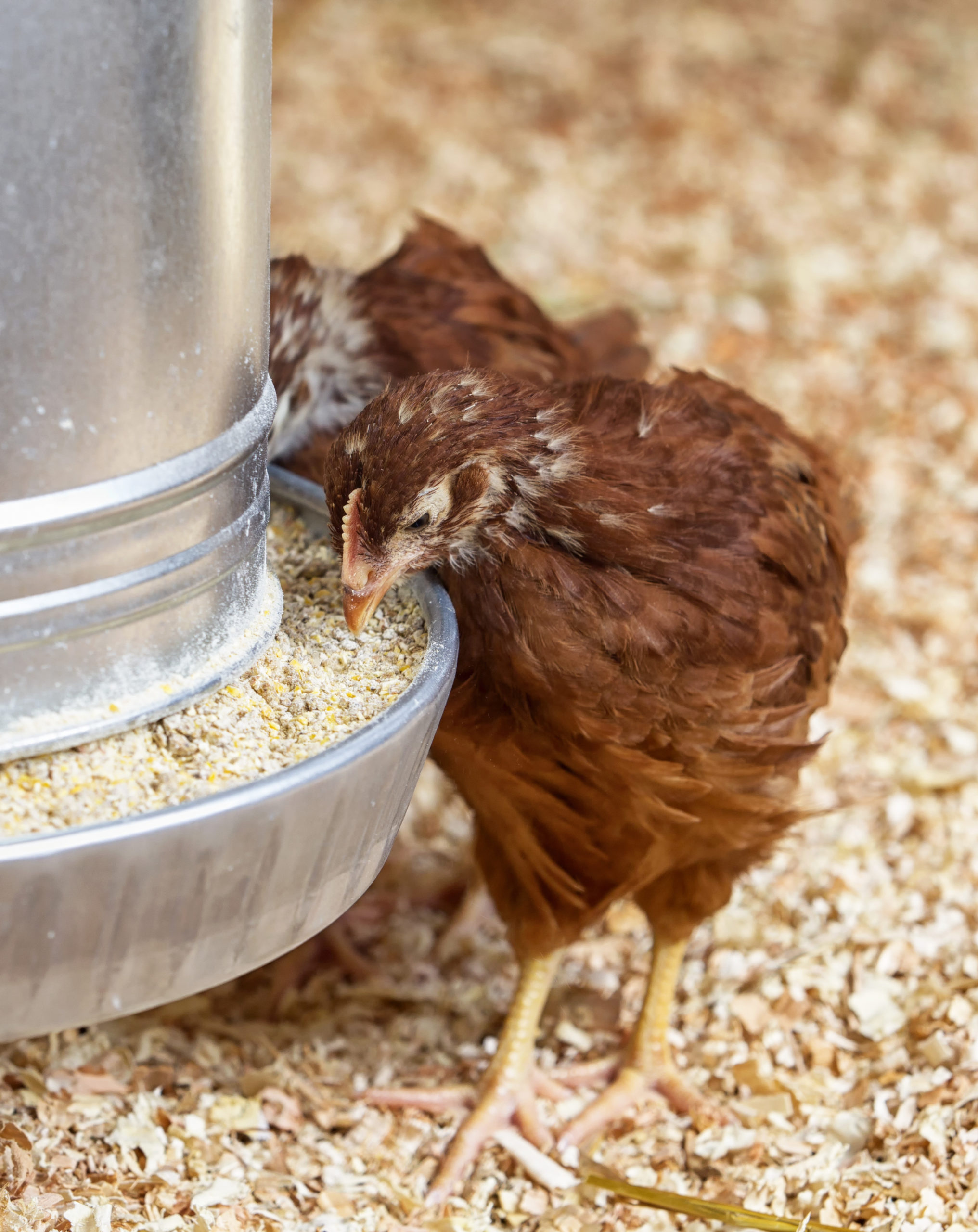
Need supplements for your dispenser? ⬇️ ⬇️ ⬇️
Storage
- Storage bins: As your coop isn't in your house, it is challenging to keep chicken supplies dry and clean. You wouldn't eat moldy food, and chickens shouldn't eat it either. Bins with tight lids keep rodents and moisture out.
- Egg basket and cartons: With a flock of laying hens, you'll need a safe place to put the eggs. Eggs shouldn't go in pockets, or they won't last long. 😬 There's the saying "to not put all of your eggs in one basket," but in this case, you should! For more permanent egg storage, a ready supply of egg cartons is helpful.

As you can see, ensuring proper and safe housing for your flock takes a bit of work. Once you have your chicken coop necessities and it’s built, it should last many years and house many happy chickens.
Interested in learning more about chicken care? Check out these articles!
What is “Grit,” and Why Do My Chickens Need It?




